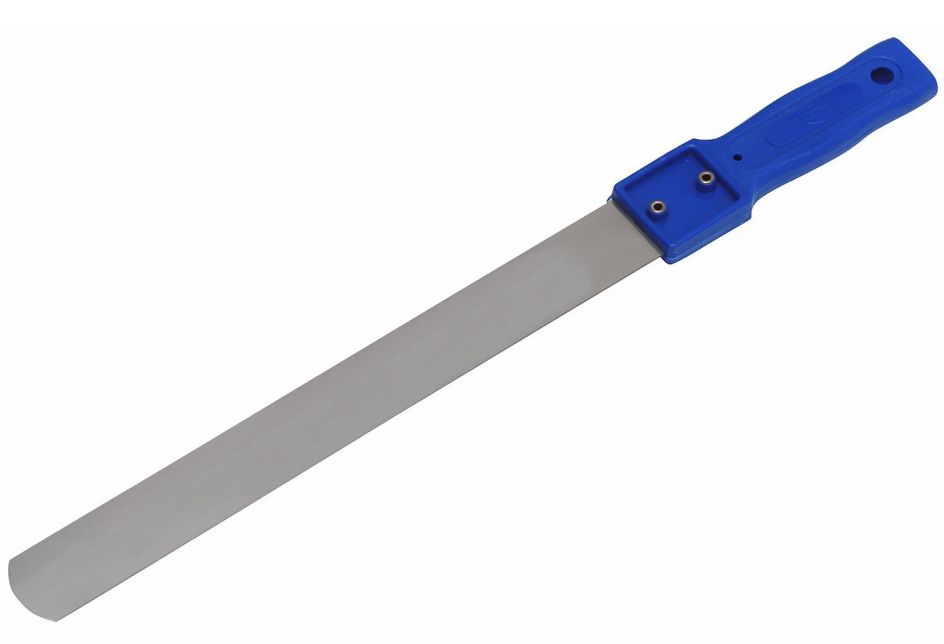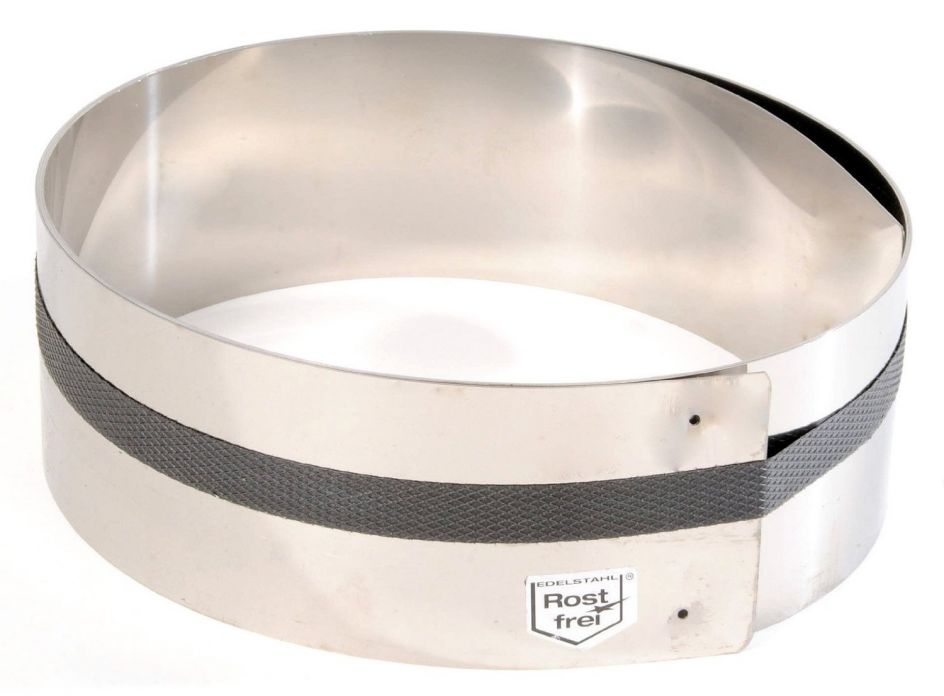Your wallpapering knife and straight edge are important tools for cutting lengths of wallpaper that have had wallpapering paste applied, usually on the trestle table. They are used together and are most suited to paper-based wall décor.
Wallpapering knives - variations
If you put "wallpapering knife" into your search engine, you will often also get hits for the Cutter Knife. However, these two wallpapering tools are very different in terms of characteristics and application.
The wallpapering knife consists of a plastic handle which holds a double-edged blade made of stainless steel. The blade is usually about 30 cm long and has one flat and one slightly curved side. The tip is rounded. Compared to other knives, the blade is not very sharp as it is not used for cutting in the true sense but for severing by chopping or hewing. The price for a wallpapering knife is around 10 GBP.

The use of the wallpapering knife dates back to the 1970s when patterns weren't printed across the entire width of wallpaper - about 2 cm to each side were left bare, without print. The knife was used to quickly and easily "chop" these unprinted edges off.
Straight edge - variations
The so-called "straight edge" for wallpapering is a flexible stainless steel blade (about 6 cm wide and 200 cm long). Some models have punched holes to allow them to be fixed to the trestle table. The straight edge can usually be folded for easier storage. They are priced between 12 and 18 GBP. The straight edge should not be confused with the wallpaper tearing ruler or the triangular cutting edge, both of which might also make an appearance during an internet search.

Application of straight edge and cutting knife
Both of these wallpapering tools are used to cut paper-based, pre-pasted strips of wallpaper lengthwise. This could be necessary if, for instance, there isn't room for the entire width of a wallpaper strip on the wall.
The straight edge is rolled out to its total length and laid out flush along the edge of the trestle table. The drilled hole allows for the straight edge to be screwed on permanently. Occasional DIYers usually stick the straight edge to the trestle table with single-sided adhesive tape. This means that it can be removed once the wallpapering process is finished.
Adhesive paste is spread over the wallpaper, which is then folded and positioned so that the cutting edge is flush with the straight edge. The piece that needs to be removed protrudes over the edge. The flat side of the cutting knife is placed on the straight edge and the wallpaper is removed by applying quick striking movements along the steel edge. The curved side of the blade helps the wallpaper to slide off easily.
These tools are designed for wallpapers with paper-based carrier and surface layers. A clean "cut" can only be achieved with these types of wall décor. All other wallpaper variations, e.g. those with fibres, textiles and special materials and finishes or coatings can be damaged by this method - they might rip, fray - or the knife might not be able to be placed securely on the wallpaper. Grass, cork, metal, textile wallpapers etc. are not suitable as the wallpapering knife is not designed for them and isn't sharp enough for most of them.


